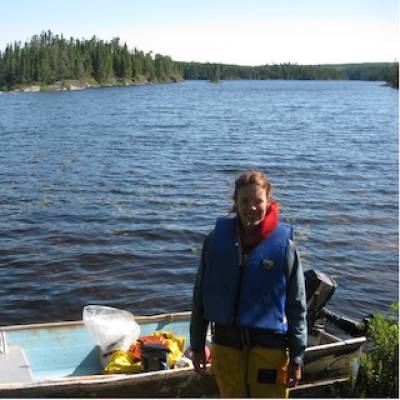Meet the Expert: Joanne Littlefair
18 April 2024
Joanne Littlefair is a researcher at the People and Nature Lab at UCL East. Within her role, she pioneers innovative methods to monitor and comprehend biodiversity. We met up with her recently to talk about her research and what motivates her. Here's what she told us.
Joanne Littlefair is a researcher at the newly established People and Nature Lab at UCL East, delving into the intersection of biodiversity, technology, and society. Within her role, she pioneers innovative methods to monitor and comprehend biodiversity, recognising the gaps in our understanding of ecosystems and their transformations. Her focus lies in scrutinising habitats profoundly affected by human intervention, aiming to uncover strategies for their management that ultimately foster ecological well-being.

What attracted you to the area of Biological Sciences?
Answer: When I was a kid my grandparents lived in the countryside and I would stay with them in the school holidays. My gran knew so much about plants and insects (she can still rattle off the Latin names at 90 years old). That’s what started off an interest in nature and farming. They were very supportive and interested in my career steps to study biology.
What inspired you to specialise in creating and applying new genetic technologies?
Answer: I started researching this area during a postdoc job in 2015. My work focuses on creating and applying new genetic technologies, primarily environmental DNA, because it's an efficient way to look at many different taxonomic groups with high spatial and temporal resolution. Although my background is in freshwater ecosystems and fisheries, my team and collaborators have recently been transferring this method to the terrestrial biome by developing airborne eDNA sampling. During that postdoctoral position I found the idea that all species release tiny amounts of DNA into the environment incredibly fascinating.
What do you enjoy most about teaching and lecturing your students?
Answer: I love the “ah-ha!” moments that students have and I enjoy empowering people to learn about science and data analysis when they are not feeling confident or aren’t convinced it’s for them. Science is the adventure of a lifetime and it’s amazing to help other people progress on their journeys from whatever point they are starting from.
How do you see the field of Biological Sciences evolving in the future? How does that further affect your research?
Answer: There’s a trend towards larger datasets, from genomics, satellites, images and sound capture. Traditionally, biodiversity science has suffered from not enough monitoring – it’s hard to understand trends if we don’t have enough data or the right kind of data – so overall this is a promising step. However, we have to keep in sight our questions and ensure the data we are collecting is meaningful and helpful.
What’s your next big challenge in terms of your research?
Answer: There are lots of challenges with my current area of study, which is the application of environmental DNA technologies to air samples to investigate terrestrial biodiversity. We need to work out where signals are coming from and how far they travel on the wind, and how these kinds of data can be usefully processed to reflect information about ecosystem health and ecological communities.
What motivates you at the start of each day?
Answer: My day usually begins with running around after my 3-year-old, it’s tiring but so inspirational to watch her learn about the world. I also feel responsibility to leave the world in a better place for the next generation, and I hope I can contribute to that in a small way by being an environmental scientist.
 Close
Close

